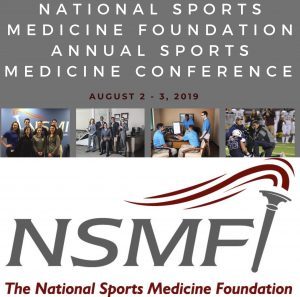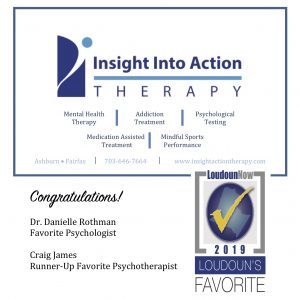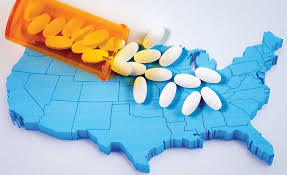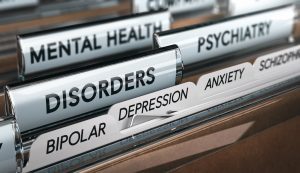Cyndi Turner's Blog, page 17
September 23, 2019
Increasing Your Chances of Quitting Tobacco For Good
Are you or a loved one struggling with tobacco use? Do you want to quit smoking and don’t know how to start? Have you tried to quit before and been unsuccessful? Worried that vaping is not a great alternative?
 Nicotine has been proven to be a highly addictive substance. According to the Diagnostic Statistic Manual (DSM-5), an updated definition of addiction related to tobacco related substances was established as Tobacco Use Disorder to include a problematic pattern of tobacco use leading to clinically significant impairment or distress. Daily use is not needed for problematic tobacco use. In fact, only two of the following criteria must be met for diagnosing a Tobacco Use Disorder:
Nicotine has been proven to be a highly addictive substance. According to the Diagnostic Statistic Manual (DSM-5), an updated definition of addiction related to tobacco related substances was established as Tobacco Use Disorder to include a problematic pattern of tobacco use leading to clinically significant impairment or distress. Daily use is not needed for problematic tobacco use. In fact, only two of the following criteria must be met for diagnosing a Tobacco Use Disorder:
Tobacco is taken in larger amounts or over longer periods of time than was intended.
Persistent desire or unsuccessful efforts to stop or cut down use.
A great deal of time is spent in activities to use or obtain tobacco.
Craving, strong desire or urge to use tobacco.
Recurrent use resulting in failure to fulfill or interference with obligations such as work, school or home.
Use despite having social or interpersonal problems, such as arguments about tobacco use.
Important activities are given up or reduced because of tobacco use.
Recurrent use in situations that would be hazardous, such as smoking in bed.
Use despite physical or psychological problems likely to have been caused or exacerbated by tobacco.
Tolerance requiring more tobacco to achieve the same effects or diminished effects with continued use of the same amount of tobacco.
Withdrawal after stopping tobacco use or continuing to use tobacco or closely related substance such as a nicotine patch, to avoid potential withdrawal symptoms.
How many did you check off?
According to the DSM-5 withdrawal can consist of irritability, frustration, anger, anxiety, difficulty concentration, increased appetite, restlessness, depressed mood or insomnia. The fear of withdrawal symptoms is often enough for someone to lack the desire to quit. Vaping, also known as e-cigarettes or Juuls, has been marketed as a healthier alternative to cigarette smoking, but new data is showing the opposite. The concentration of nicotine in vape pods is often higher and there are numerous carcinogens given off by e-cigarettes that have been linked to respiratory and pulmonary illnesses and even death.
Even when motivated to quit, many people are not able to quit tobacco use on their own. In fact, the first year is the hardest for most people that try to quit, with rates as high as 60-90% of tobacco relapse within the first year. Younger age is a strong predictor for relapse on tobacco. Many people try as many as 30 times to quit tobacco use.
We are here to help. Insight Into Action Therapy uses a clinical approach to support your attempt to quit tobacco products and increase your chances of success. We help explore your relationship with tobacco and factors impacting your use. We work with you to develop a quit plan and track progress while making adjustments if needed. We can also assess the need for supplemental medication and provide an easy internal referral to our prescribers to aid in quitting your nicotine use and support long term cessation goals.
Insight Into Action Therapy specializes in the treatment of Substance Use Disorders. We have specific services focused on supporting cessation of Tobacco Use, particularly with unique programming for teen smoking/vaping cessation. Give us a call at (703) 646-7664 to learn about our tobacco-related services.
September 22, 2019
Increasing Your Chances of Quitting Tobacco For Good
Are you or a loved one struggling with tobacco use? Do you want to quit smoking and don’t know how to start? Have you tried to quit before and been unsuccessful? Worried that vaping is not a great alternative?
Nicotine has been proven to be a highly addictive substance. According to the Diagnostic Statistic Manual (DSM-5), an updated definition of addiction related to tobacco related substances was established as Tobacco Use Disorder to include a problematic pattern of tobacco use leading to clinically significant impairment or distress. Daily use is not needed for problematic tobacco use. In fact, only two of the following criteria must be met for diagnosing a Tobacco Use Disorder:
Tobacco is taken in larger amounts or over longer periods of time than was intended.
Persistent desire or unsuccessful efforts to stop or cut down use.
A great deal of time is spent in activities to use or obtain tobacco.
Craving, strong desire or urge to use tobacco.
Recurrent use resulting in failure to fulfill or interference with obligations such as work, school or home.
Use despite having social or interpersonal problems, such as arguments about tobacco use.
Important activities are given up or reduced because of tobacco use.
Recurrent use in situations that would be hazardous, such as smoking in bed.
Use despite physical or psychological problems likely to have been caused or exacerbated by tobacco.
Tolerance requiring more tobacco to achieve the same effects or diminished effects with continued use of the same amount of tobacco.
Withdrawal after stopping tobacco use or continuing to use tobacco or closely related substance such as a nicotine patch, to avoid potential withdrawal symptoms.
How many did you check off? According to the DSM-5 withdrawal can consist of irritability, frustration, anger, anxiety, difficulty concentration, increased appetite, restlessness, depressed mood or insomnia. The fear of withdrawal symptoms is often enough for someone to lack the desire to quit. Vaping, also known as e-cigarettes or Juuls, has been marketed as a healthier alternative to cigarette smoking, but new data is showing the opposite. The concentration of nicotine in vape pods is often higher and there are numerous carcinogens given off by e-cigarettes that have been linked to respiratory and pulmonary illnesses and even death. Even when motivated to quit, many people are not able to quit tobacco use on their own. In fact, the first year is the hardest for most people that try to quit, with rates as high as 60-90% of tobacco relapse within the first year. Younger age is a strong predictor for relapse on tobacco. Many people try as many as 30 times to quit tobacco use. We are here to help. Insight Into Action Therapy uses a clinical approach to support your attempt to quit tobacco products and increase your chances of success. We help explore your relationship with tobacco and factors impacting your use. We work with you to develop a quit plan and track progress while making adjustments if needed. We can also assess the need for supplemental medication and provide an easy internal referral to our prescribers to aid in quitting your nicotine use and support long term cessation goals.
Insight Into Action Therapy specializes in the treatment of Substance Use Disorders. We have specific services focused on supporting cessation of Tobacco Use, particularly with unique programming for teen smoking/vaping cessation. Give us a call at (703) 646-7664 to learn about our tobacco-related services.
The post Increasing Your Chances of Quitting Tobacco For Good appeared first on Insight Into Action Therapy.
September 9, 2019
Celebrating National Recovery Month
September is National Recovery Month. Recovery Month is a national observance held every September to educate Americans that substance use treatment and mental health services can help those dealing with a substance use disorder or mental health issue to live a health and rewarding life. The month celebrates the successes of those in recovery and combats the stigma of those struggling with these issues.
 But what is recovery? A primary care doctor might say that it is giving the body time to heal after an illness, injury, or surgery. If you are a behavioral health care provider, person struggling with drug or alcohol use, or love someone who does your response will likely have more to do with the substances used and the behaviors related to them. You may even include mental health disorders and the impact on the family. If an individual just completed an inpatient treatment program, a primary counselor might say that it is what you do to “stay clean.” A discharge planner might say that recovery is not using drugs or alcohol and going to Alcoholics Anonymous meetings. Some might include going to an intensive outpatient treatment program or sober living house. The individual’s response will be influenced by the treatment program. Family members’ definition may be affected by what they read on the internet. Those who participate in mutual support meetings usually define recovery through abstinence from the substances that rendered them powerless.
But what is recovery? A primary care doctor might say that it is giving the body time to heal after an illness, injury, or surgery. If you are a behavioral health care provider, person struggling with drug or alcohol use, or love someone who does your response will likely have more to do with the substances used and the behaviors related to them. You may even include mental health disorders and the impact on the family. If an individual just completed an inpatient treatment program, a primary counselor might say that it is what you do to “stay clean.” A discharge planner might say that recovery is not using drugs or alcohol and going to Alcoholics Anonymous meetings. Some might include going to an intensive outpatient treatment program or sober living house. The individual’s response will be influenced by the treatment program. Family members’ definition may be affected by what they read on the internet. Those who participate in mutual support meetings usually define recovery through abstinence from the substances that rendered them powerless.
Many dealing with a drug or alcohol issue believe that recovery means abstinence from the substance they were using. As a result, most treatments are designed to get people to stop using drugs and alcohol. Those who continue using or return to using a chemical are often seen as a failure. What if I told you that recovery has little to do with drugs or alcohol?
In 2011, The Substance Abuse and Mental Health Services Administration (SAMHSA) announced its definition of recovery:
A process of change through which individuals improve their health and wellness, live self-directed lives, and strive to reach their full potential.
Have you noticed what is missing?
[image error]The 2016 Surgeon General’s Report on Alcohol, Drugs, and Health says that there are numerous definitions of recovery in relation to substance use disorders. The report states:
“All agree that recovery goes beyond remission of symptoms… ‘abstinence’ though often necessary, is not always sufficient to define recovery.”
Abstinence from alcohol or drugs is not required to be in recovery! While it may be necessary for some to completely stop their use of all substances, the majority of people do not. It is more important to understand why a person is drinking or using drugs. Often, once that person identifies it, makes lifestyle changes, and develops alternative coping skills they are able to live a balanced life. All without complete abstinence.
Studies have shown that one the main reasons people do not enter treatment is that they are not ready to give up their use of alcohol drugs. When programs require total abstinence, they are essentially refusing to give any type of help. Doctors don’t say that their patients must be free of their symptoms in order to receive treatment, so why do we require this of drug and alcohol users?
Thankfully, there is a shift occurring for substance use disorders. As we recognize that recovery has more do to with overall health and wellness than abstinence, harm reduction methods are becoming way to help those struggling with drugs, alcohol, and mental health issues. Harm Reduction Psychotherapy seeks to reduce the consequences of behaviors. It involves education, allows the client to choose the goals, and views any reduction of harm as success. This approach encourages people to build on their achievements rather than punish them for an unhealthy choice. In this way, more people are willing get the help they need.
Cyndi Turner, LCSW, LSATP, MAC is a nationally recognized trainer on the harm reduction method called alcohol moderation. She is the author of Can I Keep Drinking: How You Can Decide When Enough is Enough. Her newest books The Clinician’s Guide to Alcohol Moderation: Alternative Methods and Management Techniques and Practicing Alcohol Moderation: A Comprehensive Workbook will be available 3/20/20. For more information go to www.insightactiontherapy.com.
Celebrating National Recovery Month
September is National Recovery Month. Recovery Month is a national observance held every September to educate Americans that substance use treatment and mental health services can help those dealing with a substance use disorder or mental health issue to live a health and rewarding life. The month celebrates the successes of those in recovery and combats the stigma of those struggling with these issues.
But what is recovery? A primary care doctor might say that it is giving the body time to heal after an illness, injury, or surgery. If you are a behavioral health care provider, person struggling with drug or alcohol use, or love someone who does your response will likely have more to do with the substances used and the behaviors related to them. You may even include mental health disorders and the impact on the family. If an individual just completed an inpatient treatment program, a primary counselor might say that it is what you do to “stay clean.” A discharge planner might say that recovery is not using drugs or alcohol and going to Alcoholics Anonymous meetings. Some might include going to an intensive outpatient treatment program or sober living house. The individual’s response will be influenced by the treatment program. Family members’ definition may be affected by what they read on the internet. Those who participate in mutual support meetings usually define recovery through abstinence from the substances that rendered them powerless. Many dealing with a drug or alcohol issue believe that recovery means abstinence from the substance they were using. As a result, most treatments are designed to get people to stop using drugs and alcohol. Those who continue using or return to using a chemical are often seen as a failure. What if I told you that recovery has little to do with drugs or alcohol? In 2011, The Substance Abuse and Mental Health Services Administration (SAMHSA) announced its definition of recovery: A process of change through which individuals improve their health and wellness, live self-directed lives, and strive to reach their full potential. Have you noticed what is missing?
The 2016 Surgeon General’s Report on Alcohol, Drugs, and Health says that there are numerous definitions of recovery in relation to substance use disorders. The report states: “All agree that recovery goes beyond remission of symptoms… ‘abstinence’ though often necessary, is not always sufficient to define recovery.” Abstinence from alcohol or drugs is not required to be in recovery! While it may be necessary for some to completely stop their use of all substances, the majority of people do not. It is more important to understand why a person is drinking or using drugs. Often, once that person identifies it, makes lifestyle changes, and develops alternative coping skills they are able to live a balanced life. All without complete abstinence. Studies have shown that one the main reasons people do not enter treatment is that they are not ready to give up their use of alcohol drugs. When programs require total abstinence, they are essentially refusing to give any type of help. Doctors don’t say that their patients must be free of their symptoms in order to receive treatment, so why do we require this of drug and alcohol users? Thankfully, there is a shift occurring for substance use disorders. As we recognize that recovery has more do to with overall health and wellness than abstinence, harm reduction methods are becoming way to help those struggling with drugs, alcohol, and mental health issues. Harm Reduction Psychotherapy seeks to reduce the consequences of behaviors. It involves education, allows the client to choose the goals, and views any reduction of harm as success. This approach encourages people to build on their achievements rather than punish them for an unhealthy choice. In this way, more people are willing get the help they need.
Cyndi Turner, LCSW, LSATP, MAC is a nationally recognized trainer on the harm reduction method called alcohol moderation. She is the author of Can I Keep Drinking: How You Can Decide When Enough is Enough. Her newest books The Clinician’s Guide to Alcohol Moderation: Alternative Methods and Management Techniques and Practicing Alcohol Moderation: A Comprehensive Workbook will be available 3/20/20. For more information go to www.insightactiontherapy.com.
The post Celebrating National Recovery Month appeared first on Insight Into Action Therapy.
August 20, 2019
Why Are There Toilets in the Juul Room?
Walk into any high school or middle school bathroom. Do you smell something fruity? Something minty? That’s not air freshener. Our school bathrooms have turned into Juul Rooms. The administrators sometimes even lock the bathrooms because so many kids are vaping in there.
Those sleek black objects that resemble USB flash drives are actually Juuls, also known as vapes and e-cigarettes. And they are a growing epidemic. I have far too many peers who are so dependent on nicotine they cannot go a full school day or even a whole class without their fix. I have even seen classmates so emboldened by the “everyone does it” claim that it is not uncommon to see someone vaping in class. Even in AP classes where so many of the students look down upon drugs and alcohol, I have seen someone take a hit of mango flavored nicotine. It isn’t even shocking for me to look to my left during a test and see someone take a hit off their Juul and then just blow the vapor down their shirt when the teacher is looking away.
 This demonstrates how hooked an entire generation has become. But my peers do not see it as a problem. Yes, they are aware they are addicts, but what’s the harm? It’s not like they are addicted to yesterday’s “coffin nails.” Teens today are turned off of cigarettes because we know it causes lung, throat, and several other types of cancer. But people blame the problems on the smoke produced from the cigarettes, not the actual nicotine. So e-cigarettes can be easily dismissed, mistakenly thinking they won’t hurt anybody. Despite the common view, vapes contain harmful chemicals in addition to nicotine. Ultrafine particles are inhaled deep into the lungs. These include flavoring such as diacetyl, a chemical linked to a serious lung disease; volatile compounds such as benzene, which is found in car exhaust; and heavy metals, such as nickel, tin, and lead.
This demonstrates how hooked an entire generation has become. But my peers do not see it as a problem. Yes, they are aware they are addicts, but what’s the harm? It’s not like they are addicted to yesterday’s “coffin nails.” Teens today are turned off of cigarettes because we know it causes lung, throat, and several other types of cancer. But people blame the problems on the smoke produced from the cigarettes, not the actual nicotine. So e-cigarettes can be easily dismissed, mistakenly thinking they won’t hurt anybody. Despite the common view, vapes contain harmful chemicals in addition to nicotine. Ultrafine particles are inhaled deep into the lungs. These include flavoring such as diacetyl, a chemical linked to a serious lung disease; volatile compounds such as benzene, which is found in car exhaust; and heavy metals, such as nickel, tin, and lead.
Maybe it’s because there hasn’t been the same level of condemning evidence of e-cigarettes’ potent side effects. But still, it shouldn’t take the CDC to say that inhaling the same stuff that is in car exhaust is terrible for you. More and more research is being conducted that demonstrates that e-cigarettes are nowhere near as harmless as my generation believes. But until science can decisively show that these harmless little Juuls can be lethal, I don’t know if my peers will stop.
E-cigarettes are not all vice. They can be a way out for those who have been smoking cigarettes for decades. But anyone born after the turn of the century has no good reason to be vaping. And peer pressure is largely to blame. It is so easy to just conform for a second, because just once can’t hurt. But the amount of nicotine in e-cigarettes can easily turn one little puff into an addiction. Unlike other tobacco products, the concentration of nicotine is much higher, causing the user to become addicted far quicker. So succumbing to peer pressure for just a fleeting second can become a long standing problem when mixed with the large amounts of nicotine in vapes.
Perhaps education will help. I can’t conjure up a single person from my school who still thinks that smoking cigarettes are cool. My Senior Class President is also the biggest Juul dealer. They buy them in bulk and then sell them for double the price to younger students. The laws changed this July for buying e-cigarettes, now requiring customers to be 21 instead of 18. But even with this added difficulty, some gas stations don’t card, leaving teenagers easy access to vape products. I wonder if my class president knows the extent of the harm they may be causing. Would my school’s vape dealer have provided the younger students who they are supposed to be mentoring this product knowing that it is like smoking out of an exhaust pipe? I really doubt so. I don’t think that my generation would willingly put themselves at risk for a fleeting buzz. But time will tell if we will continue to ignore past lessons and repeat our grandparents’ mistakes with the tobacco products of their generation.
E-cigarettes Through the Eyes of a Loudoun County Teen
Insight Into Action Therapy offers a Smoking Cessation program in the Ashburn location. For more formation about program contact Angie Harris at 703-646-7664 ext. 10 or aharris@insightactiontherapy.com
August 6, 2019
National Sports Medicine Institutes Annual Sports Medicine Conference
On Friday August 2, 2019 Craig James was a speaker at the National Sports Medicine Institute’s, 2019 National Sports Medicine Foundation Annual Sports Medicine Conference. The two-day conference was held at the Shenandoah University – Ashburn Campus for athletic trainers, many local and some traveled as far as Michigan, to continue their education for accreditation. Craig’s topic Psychological Strategies for Returning to Play supported this year’s theme “Anticipate, Prepare, Perform.” Integrating sports and developmental psychology, the emphasis was on the emotional, physical and psychological impact of an injury on student-athletes. A few highlights included:
 There is no such thing as a minor injury. Even the most insignificant injuries can be considered traumatic and unmask mental health issues, like anxiety and depression.
There is no such thing as a minor injury. Even the most insignificant injuries can be considered traumatic and unmask mental health issues, like anxiety and depression.While it is normal to have an emotional response to an injury and medical information, the more connected the identity of the student-athlete is to the sport, the greater the chance of a negative emotional reaction.
While many athletes develop self-esteem, enjoyment, and self-satisfaction from sports, it can also be a mechanism for coping with life stressors.
While most high school and college teams have diverse coaching staffs that include athletic trainers, medical doctors, and assistants, many do not include a sports psychologist/social worker or mental health performance professional. By providing athletes with access to this type of professional, we help improve athletic performance and destigmatize therapy.
Is Contemporary Culture Re-defining ADHD?: Lessons Derived from Limitless
For an eight year old movie, the issues that Limitless raise remain as contemporary as ever: What are the actual indications for stimulant pills? What does it say about those living in modern, western culture that they seem simply unable to function without them in modern workplace culture? If so, does that also mean that the environment is a more powerful determinant of ADHD symptoms than biology is? Hence the all too familiar allure of pharmaceuticals: that a medication will make you think clearer, domore, or achieve more than you could ever dream.
Enter Edward Morra (Eddie), a writer who has a book contract, but is struggling to actually produce anything. With him holed up in his grotty Manhattan apartment, or procrastinating in local bars, it is clear that Eddie’s life is going nowhere. Eddie then encounters an old acquaintance who tells him about a new drug “NZT” and how it will drastically change his life. Edward hesitantly takes the pill, rationalizing to himself how much worse can things get? Within couple of minutes, he is thinking more clearly (as shown by the onset of new and vivid color tints, as well as his improved alertness and mood) and utilizing his brain to its maximumpotential. He rapidly transforms from boring to interesting, even charismatic.
 The plot goes on to showcase Eddie’s exponential learning curve, with him accessing memories that were once hidden deep in his brain. Not surprisingly, Edward starts to make smart choices, as evidenced by his making the right kind of friends and the right kind of investments. He becomes the man about town, able to converse effortlessly in exotic foreign languages. He is invited to high end parties. Not surprisingly, he achieves his star spot in New York City’s big league, with all that money has to offer him, and even more flowing into his electronic coffers.
The plot goes on to showcase Eddie’s exponential learning curve, with him accessing memories that were once hidden deep in his brain. Not surprisingly, Edward starts to make smart choices, as evidenced by his making the right kind of friends and the right kind of investments. He becomes the man about town, able to converse effortlessly in exotic foreign languages. He is invited to high end parties. Not surprisingly, he achieves his star spot in New York City’s big league, with all that money has to offer him, and even more flowing into his electronic coffers.
Eddie appears to be experiencing a protracted amphetamine/cocaine-induced intoxication, yet without any associated anxiety, psychosis or impairment in psychosocial functioning. Even accounting for artistic license, the movie raises several interesting questions: 1) are there drugs that actually enhance memory? 2) should success really be defined as a manic frenzy whereby doing as much as possible per day is the expectation? 3) what role do stimulants play in modern workplace culture?
With the decades long, rise in stimulant prescriptions in the United States, their known addictive potential, and their widespread use among young students, psychiatrists worldwide may need to acknowledge a separate public thirst for these medications – something that cannot be just accounted for by the baseline prevalence of ADHD alone. Confounding this issue are ongoing diagnostic difficulties in distinguishing ADHD from comorbid diagnoses, such as Bipolar Disorder and Generalized Anxiety Disorder.
We may also need to contend with the additional factor of changing cultural norms. The contemporary definition of success in modern society may have become increasingly skewed toward productivity and accomplishment. Eddie was, at the outset, dull and unproductive. With the help of NZT, he transforms into someone who not only accomplishes his cherished dream, but who now simply does a whole lot more per day.
Such a tale would naturally resonate with those who would yearn to thrive in such a culture. My own experience in suburban private practice has corroborated this, having encountered numerous patient anecdotes about the intensity, distractibility and deadline-driven, overwork culture of the corporate workplace, inevitably resulting in the inability to concentrate. While I would typically formulate this as their being overwhelmed by anxiety, it was also clear that these patients had become psychologically dependent upon their ADHD medications in order to guarantee the performance demanded of them in such artificially stressful environments.
This experience has also made me question the rapid ascendance of the largely biological paradigm that dominates our approach to ADHD today. As a clinician, it became increasingly clear to me that the environment plays its own pivotal role in the genesis of ADHD symptoms. This concern is shared by experts in the field.
There are several studies highlighting the use of prescribed stimulants as performance enhancers by college students in the United States, especially those with competitive admission standards. This is even less surprising when one considers that the United States is not only the leading country in the world for prescription stimulants. It seems then that thethirst for memory enhancing smart drugs fails to be quenched.
 Studies to date suggest that stimulants’ overall effect on executive performance are small and highly variable, if at all. Some studies have even reported negative correlations. Distinguishing improved motivation from actually enhanced performance and the role of vigilance also remain conceptually confusing challenges. Enhancement of long term declarative memory, complex non-verbal fluency and cognitive control are perhaps the only aspects of cognitive functioning that have yielded any tangible improvements with stimulants. Interestingly, a healthy lifestyle has been found to have the most replicable benefits on cognitive performance and brain function than anything else.
Studies to date suggest that stimulants’ overall effect on executive performance are small and highly variable, if at all. Some studies have even reported negative correlations. Distinguishing improved motivation from actually enhanced performance and the role of vigilance also remain conceptually confusing challenges. Enhancement of long term declarative memory, complex non-verbal fluency and cognitive control are perhaps the only aspects of cognitive functioning that have yielded any tangible improvements with stimulants. Interestingly, a healthy lifestyle has been found to have the most replicable benefits on cognitive performance and brain function than anything else.
Judging by the environments in which stimulants are most abused, it would appear that in order to be adaptive, an almost hypomanic level of functioning is the expected norm rather than the exception. Perhaps this is more culturally determined than realized. In the high pressure, intense world of corporate America, such expectations would also self-select the most ambitious and compulsive personality subtypes to meet such demands. Understandably, such cultural pressures influence prescribing practices.
Limitless certainly takes artistic license to entertainingly dizzying heights. Its draw lies in the wish fulfillment that human beings have to transform their lives in an instant. Given its bloody ending, it may end up being more of a cautionary tale than the fantasy that many would love to indulge. Prescribers and utilizers of such drugs beware.
Dr. Anand is a psychiatrist with Insight Into Action Therapy. He is available in both the Ashburn and Fairfax locations for one-hour evaluations and half hour medication monitoring appointments. He will not rush your diagnosis or treatment. You can reach Dr. Anand at 703-646-7664 or sanand@insightactiontherapy.com
July 30, 2019
Loudoun’s Favorites
Congrats to Dr. Danielle Rothman voted Loudoun’s Favorite Psychologist and Craig James as Loudoun’s Favorite Psychotherapist runner-up.

July 15, 2019
What to Expect When Starting Suboxone
In 2016, in the United States:
51,969 persons died from an opioid overdose

1 million people suffered from an Opioid Use disorder
Yet only about 20% of these individuals received treatment for this chronic brain disease
In 2017, Virginia saw:
1,534 fatal drug overdoses, most of which were related to opioids
1,227 opioid overdoses were reported last year, a 7.8 percent increase from 1,138 in 2016
At Insight Into Action Therapy in our Ashburn office we use evidence-based medical approach called Medication Assisted Treatment (MAT) that has demonstrated success in treating people struggling with opiate use. We use the medication buprenorphine/naloxone (Suboxone) in combination with therapy so that we can offer you the best chance of attaining a life free of addiction.
 Here’s how it works. On your first visit we will:
Here’s how it works. On your first visit we will:
Review your physical and mental health
Collect a detailed history of your substance use
Order lab tests (HIV, hepatitis screen, complete blood count, and metabolic screen) to assess your current health
Submit a urine drug screen
After receiving your lab work, I will electronically send a prescription for (Suboxone) to your pharmacy. You will then bring the medication, unopened, to your Induction visit. If desired, I can also provide you with some comfort medications for nausea, insomnia and anxiety.
On your next visit to our Ashburn office, we will do an induction of the medication. These are the steps we will take to start you on Buprenorphine/Naloxone (Suboxone):
Arrive to the visit in mild withdrawal. It is not necessary to start treatment in severe withdrawal and have you experience extreme discomfort.
Assess at beginning of visit, at one hour and at two hours using the Clinical Opiate Withdrawal Scale score (COWs). The areas rated will be: heart rate, sweating, restlessness, pupil size, bone or joint aches, runny nose/tearing, gastrointestinal upset, tremor, yawning, anxiety/irritability, and/or goose flesh bumps. These are all signs of withdrawal. When your score is > or = to 7 you are in mild withdrawal and the induction can start.
If your COWs score remains elevated, you take another buprenorphine dose under my direction.
Over the next week we will:
Assess the right dose of medication
Refer you to an appropriate therapist
Once you have the right dose, you will no longer crave opiates. In the first month you may be seen on a weekly basis. Based on your progress, appointments will then occur on a monthly basis. At each appointment you will submit to an observed urine screen and the Prescription Monitoring Program will be checked as a part of best practices.
Many people are on Suboxone for a period of eighteen months. The decision to taper is based on many factors. You and your prescriber will make this decision together.
Gwen Davis, FNP, MSN-BC provides MAT as well as medication monitoring. She can be reached at 703-646-7664 x16 or gdavis@insightactiontherapy.com.
June 25, 2019
Does Your Psychiatric Diagnosis Matter?
The answer to this question is most a resounding yes for most patients, families, and, insurance companies. But for the millions of practicing therapists, counselors, psychologists and psychiatrists, we may not get such enthusiastic agreement on this answer. Why is that?
The answer may lie in how psychiatric diagnoses are made, and what our expectations are, once they are given. For many, a diagnosis oftentimes means that a solution to their search for answers is finally “here.” They can now get the treatment they truly deserve. They may have gone through a bewildering journey in our complicated healthcare system, and have been let down countless times before because of a misdiagnosis. Then there is the overwhelming amount of online information about diagnoses, usually including lists of criteria from the latest Diagnostic and Statistical Manual of Mental Disorders – 5thEdition (DSM-5).
As a practicing psychiatrist, I am trained to look at diagnoses differently. For me, they are a tentative starting point, not the end. When first made, they mark the beginning of my journey with my patient, and are therefore always subject to change as I get to know them better. More information surfaces with time. The patient’s patterns and habits begin to become more obvious and we navigate life stresses together on this very same journey.
That means that my diagnoses are always subject to review. For me, they are not this oversimplified, concrete entity that is given a numeric billing or diagnosis code by an insurance company. That just reflects a rather cold, digitized approach to healthcare that is a universe away from the realities and nuances of human suffering.
I am far more interested in what symptoms are most troubling to my patient and focus my energy on those instead. Symptoms tend to cluster into patterns known as syndromes that form the prototype behind many diagnoses. Training in area gives a healthcare professional a sixth, intuitive sense of what the patient is likely struggling with (e.g. a mood disorder, an anxiety disorder, perhaps even both), and why at this particular time.
In reality, most patients’ diagnoses merge with one another. Even more commonly, they may not even fit into the lists of diagnoses in the DSM-5 or the ICD-10 (the two internationally recognized classifications of psychiatric disorders used today).
For example, the most common scenario I see and treat is a mixture of panic symptoms, worrying, tension, phobic avoidance behaviors, along with fatigue, demoralization and even depression. What do I do? Should I then give four or five different anxiety disorder diagnoses or should I just say: Anxiety Disorder -unspecified type?
Like any prudent clinician, I will make a tentative diagnosis, and target the most troublesome symptoms with the medication I think will work best for most of them. I don’t complicate it even more by prescribing too many medications at the same time.
Most importantly, I will try to educatemy patient on the nature and frequency of their symptoms, so as to demystify them, and thereby help my patient recognize these predictable patterns for themselves. That alone can provide enormous relief because the uncertainty of what symptoms they are experiencing can exacerbate existing distress for many patients. I will also then advise themof what role they, the medication, and therapy can play in helping to resolve specific symptoms so they can have a realistic and clear plan of action as to what is needed. Ultimately, I have found that is far more helpful than just a diagnosis.
Lastly, some comments on how psychiatric diagnoses are derived today. Unlike other specialties where a blood test, CT scan or an ultrasound provides definitive proof of a diagnosis, in psychiatry, we are far more attuned to the subjective experience of the patient. That is, after all, our craft. The term psychiatry essentially means study of the human spirit or soul.
The diagnoses listed in the DSM-5 are derived from consensus agreement of experts on specific committees. While the methods are arguably scientifically rigorous, this still means that these criteria are subject to change about every ten to twenty years when it is deemed necessary to update this manual. However, it is the internet that has apparently run with these criteria and circulated them wherever one looks up psychiatric diagnoses on the world wide web. That has been a very unfortunate unintended consequence that has tended to misinform many patients about diagnoses. Only a trained mental health professional should interpret DSM-5 diagnoses.
Does your psychiatric diagnosis matter? The answer is yes for billing and insurance purposes and maybe. Symptoms matter more for actual treatment purposes and, most importantly, for relief of mental suffering.
Please talk to your mental health professional about this very important topic. After all, you are not just your diagnosis.



